Last Updated on 22 January 2025 by Cycloscope
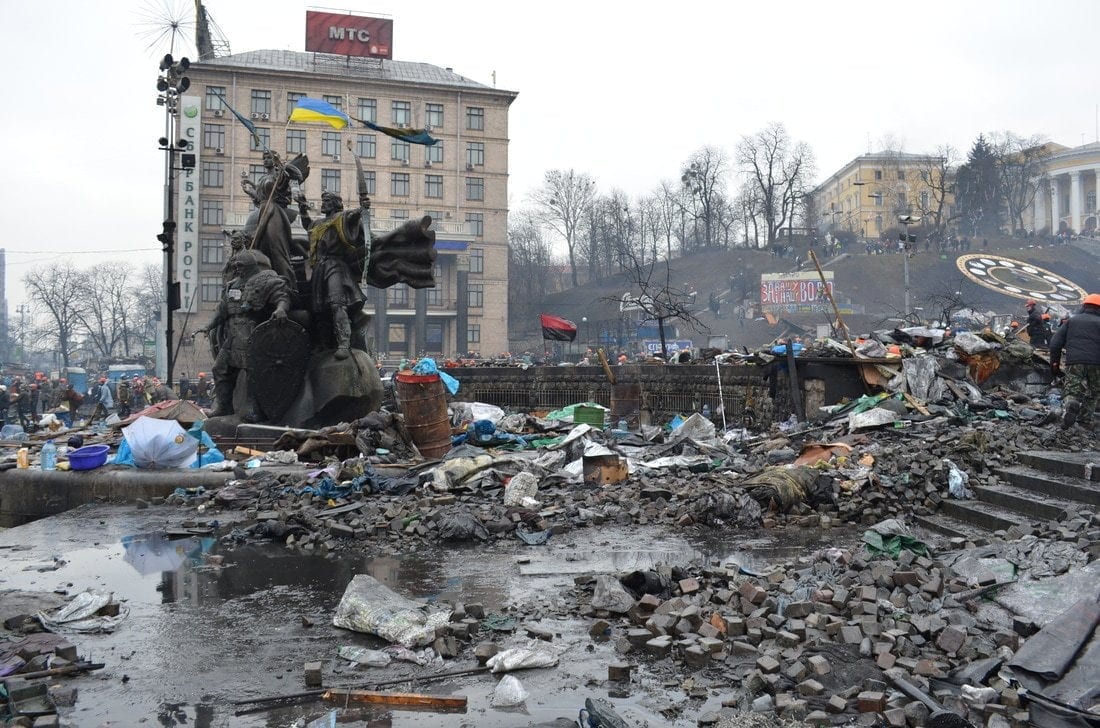
Our journey plan was to go through Ukraine and Crimea. Our reporter from Kyiv: tales from the Maidan
Our journey plan was to go through Ukraine and Crimea. Given the current political situation, we don’t know if we will be able to comply with the itinerary. We still don’t know yet to which state Crimea will belong in May and how visas will be granted. In recent months, we’ve read a little bit of everything on the situation in Ukraine, but we had the impression of a “copy and paste” abuse, and that few of those who wrote about the Maidan had ever been there.
So we took advantage of a friend, Luca Cevenini, which, more or less by accident, it’s right there. This interview does not claim to be the absolute truth but a point of view of someone who, at least, was at the Maidan! All photos were taken by Luca.
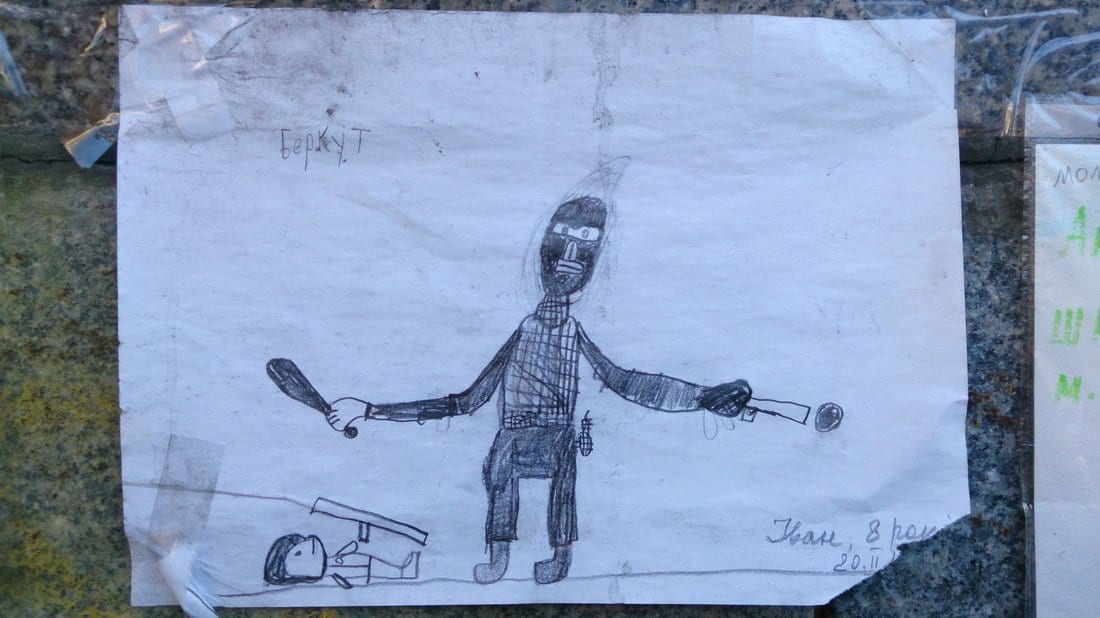
First of all the presentations! who are you and how you ended up in Kyiv? Well, my name is Luca and I am a former pharmaceutical representative. My wife, Canadian, and now also an Italian citizen, works for a multinational company that offered her a role in Kyiv, and in August we moved. She goes into the factory, I’m at home to do the cooking and take Ukrainian lessons. Fantastic!
When did you arrive in Ukraine Does the situation seem calm? Or was it already in the air that something was going to happen?
From the beginning we have heard of expectations for the signing of the agreement with the European Union, scheduled for November, and about tensions on the Ukraine-Russia customs, which here were related to that. In November, I think, began demonstrations in support of the signing of the treaty, while Yanukovych then announced that it was better to postpone.
The demonstrations continued, pro-European, but also against, always peacefully, so much so that here everyone thought “Europe, goodbye and thank you”. Only a couple of hundred guys have continued to remain under the column of the Maidan, until the night between the 29th and November 30th. On the evening of the 29th, we were in the square, like most nights, because we live 400 meters from Maidan, and all was quiet.
We returned home and we felt sorry for those guys who were playing guitars, I remembered with little melancholy the most significant earlier gatherings. I say melancholy because the feeling was that all this would just be over in a little. It was already a bloody cold.
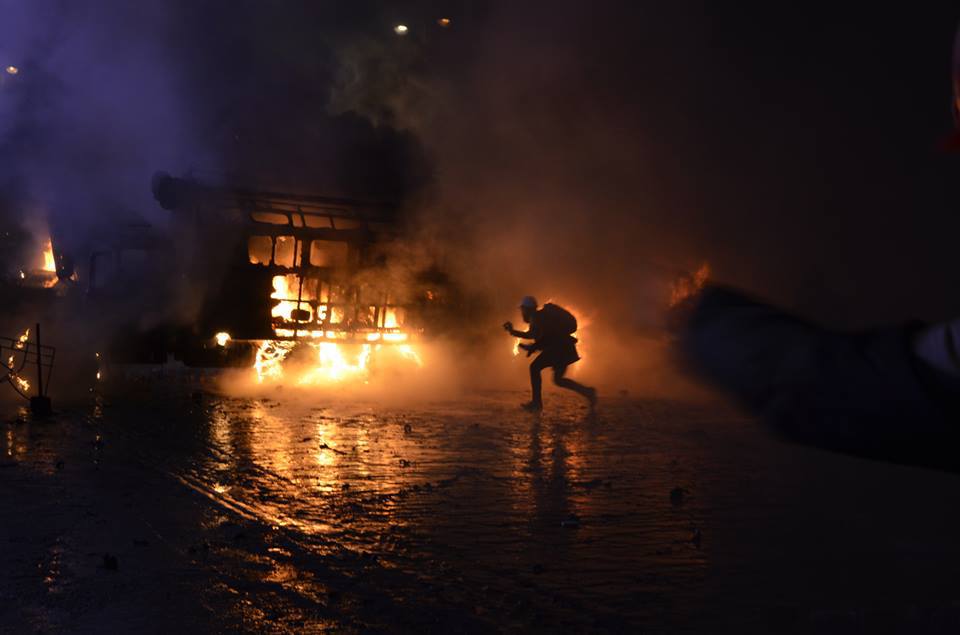
Who’s the Maidan? Do you think that the violence that occurred would just leave fascist movements on the front?
To hear Yanukovych and Putin, Kyiv would be in the hands of the Nazi-Fascist hordes, who march goose-stepping through the city, burning churches and clubbing people. I can confirm that a lot of people were there, but they were not beaten by any Nazi. In addition, there are the nationalists, Pravi Sector, Spilna Prava, the Democratic Alliance, and many more. Then several Jews shared the reasons for the protest, and if I’m not mistaken four were dead.
Nazi-fascists also were there, for sure, and had also been photographed with the doodles on the shields, and so what? I have not seen just some fascist rebel teams: I saw an entire people. And in my view, the point is: there were the reasons? I think so. Here no one is burning the churches: because they have already been burned and razed almost all by Stalin, and then the remaining ones they hold them tight. But mainly because the Ukrainian Orthodox Church was the first to give shelter to the demonstrators and to stand with them, even before politicians.
Every day on the stage (there were also Catholics, the minority) to pray, and at the end of the barricades, to the last, even them with their shields. And the union of the Ukrainian churches recognized the new government. The propaganda hits hard here but elsewhere too: in my view, to describe how the situation is, some of our journalists had never set foot in Kyiv.
I also had information about it directly or indirectly. I also asked for certainty to my teacher: ” Nazis?” she answered me with a smile and said: “this stuff (disquisitions on Nazism, fascism, etc.) is philosophy, rich’s stuff. Here there we can’t afford this, here it is only a matter of xlib (bread)…”
Why did you decide to see things from the “front line” instead of just staying safely at home?
What happened here is incredible: a popular movement that is entrenched in the main square of the capital, making it peacefully inaccessible to the government for months. Stuff I’ve ever seen, at least by me. This is what prompted me to squeeze in there. Inevitable solidarity for those people and the passion for ramshackle photography did the rest. And of course, my wife, fundamental, was always in close contact with the local working environment, and simultaneously translated what was being said on stage and people’s comments.
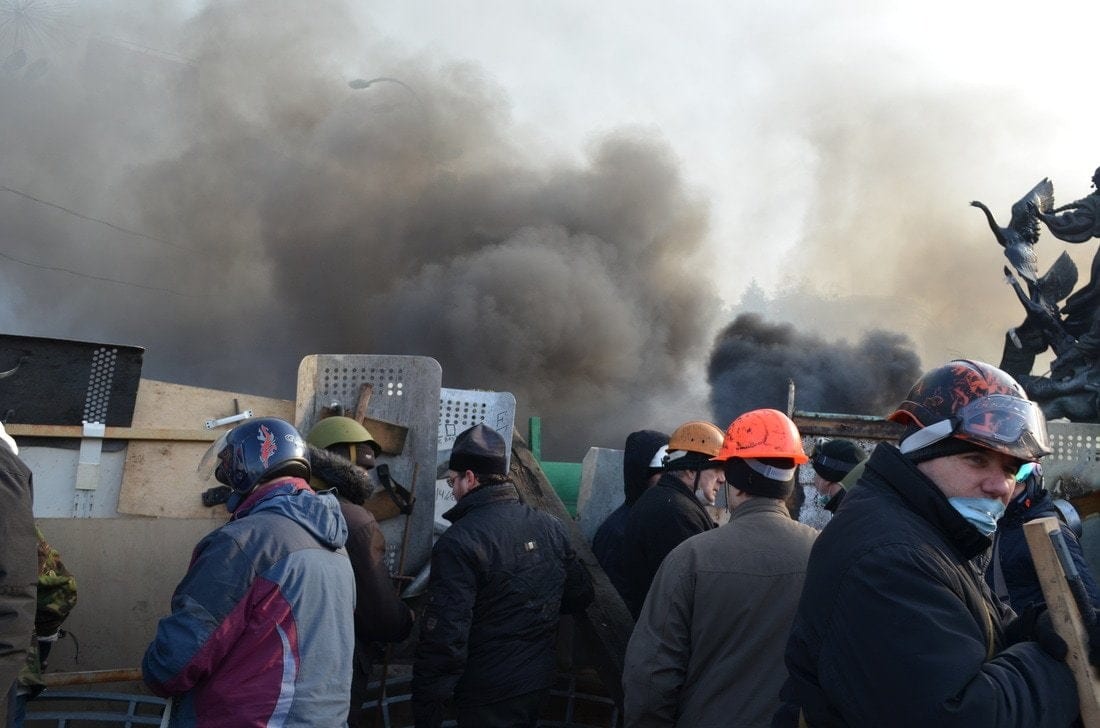
Here, the views on the events of the square are two, those who say that it is a peaceful demonstration pro-Europe and those who say that the movements of the extreme right have orchestrated the protests and it is therefore an organized coup. Does the truth lie somewhere in between or somewhere else?
Suppose you need a blood test (constitutional right to health), you arrive at the Kyiv hospital and they tell you that they are missing the needles. Come back the next day, and there is no doctor. The day after that, and the computer does not work. And so on. But if you take out a bit of hryvnia, you do the exam on the first day.
Or suppose you have to sign documents for the renovation of your home, or for any other bureaucratic stuff: take the appointment, a day off, you get there and there is nobody to make the signatures, the day after a lack of electricity, and so on. But then someone approaches you and, with a bit of grit, in an hour makes you have the whole package signed…
Or, start a business, and just when you start to go pretty well (and so do you compete with someone) the police come with some specious infringement, you seize everything, and you get stuck with the risk of ending up in jail. After a while, when you’re now desperate, someone comes along just to do you a favor buying for 30 what it’s worth 100, and you have to also say thank you. A must is when you get a fine: if you want to pay regularly you lose 3 working days in the attorney’s office and pay 100, the bribe doesn’t make you waste time and you immediately pay one-third.
The flow of money is huge and is distributed proportionally to the hierarchy of the administrations involved. Imagine what happens to the upper floors. Those who have the right friends from year to year may end up with hundreds of millions, if not billions, in their pockets. A giant, capillary, collective bribe. Not without reason, they call that “Mafia”.
The Ukrainians have endured much over the centuries, and many are resigned to such a system, but when they stepped on their sons that morning that was the last straw. When talking about Europe here, people do not intend to refer to the latest model of smartphone, but the RULES, European standards of law and justice, to ensure people’s right to live without having to walk with bundles of money in their pocket. And then on the barricades, they were all there, and all remained to the last: students, teachers, professors, lighting technicians, seismologists, theater directors, engineers, and journalists (these are some of the categories to which killed people belong). And the priests, but this is a different story.
Instead at 4 in the morning have beat boys and journalists and surrounded the square. Some of the TV showed images in the morning, and many have come to the streets. I saw women and old men cry and yell at the cops. During the day people began to gather in front of the monastery in which some protesters had taken refuge.
Towards evening a van with loudspeakers arrived. Some people took turns talking and wondered where the opposition politicians (who had spoken at the Pro-Europe meetings of the days before) were, inviting everyone to word of mouth for a protest demonstration the following day. The night began with a car horn carousel, and the next day, Sunday, in the square there were between 500,000 and one million (hard to know) people. I have seen no trace of organization in all of this.
So in summary, what happened in the recent months?
When the morning of Sunday 1st December the huge procession arrived in the Maidan, the policemen who were guarding the square had to withdraw. Usual rally (there wasn’t yet a stage), clashes in the afternoon in Bankova, where the Presidential Palace is, arrests and spread beatings (especially journalists) attempt to overthrow the red granite Lenin statue, occupation of the town hall (100 meters from the main square) and the adjacent house of Trade Unions (on the square).
In the evening we saw some guys drag a few pieces of the Christmas tree (a fake one, metal, plastic, and lights embedded): thus were born the barricades, initially with only a symbolic function, to delimit the square, became the heart of the uprising.
In the following days it snowed, it was freezing, first tents appeared (including a church tent), were asked for elections (normal government expiry was in 2015), and the punishment of those responsible for the beating, Catherine Ashton came. Another major event on the 8th, Lenin’s demolition succeeded, and an attempt to empty the square two or three days later was the government’s response.
This time the police had orders not to use their batons, and even the protesters were absolutely passive, but already wore orange safety helmets, which later became a symbol of the uprising.
The scene at 8 am, it was surreal: on one side a thick cordon of policemen with black helmets, on the other the orange cordon of protestors, all pushing towards each other, with the police who were trying to seize the stage. A huge scrum, rugby sense of the term. And on stage, the leader of the Ukrainian Orthodox Church, calling desperately for help to Kyiv citizens and brothers in Europe, French, English, etc., including Italians.
At 100 meters four buses of policemen blocked the town hall (with protesters barricaded inside). The priest’s appeal was heard because in an hour they got a lot of people. The buses were stuck in the crowd and the city hall, but they were eventually let go. In the afternoon, hundreds of people have reinforced the barricades with bags filled with ice. The President has never responded to the demands of protesters, while on the other hand started beating and kidnapping.
On January 19th, after another peaceful demonstration, clashes began in Hrusvhewski, at the entrance of the Dinamo stadium, 200 meters from Maidan. Only a few were wounded, but two days after two protesters were killed by snipers, probably posted on a building (occupied by the police) in the square of Europe, and also a policeman was killed.
Another protester was kidnapped while he was in hospital and beaten to death. The body was found near the airport. Another was kidnapped, nailed to a door (literally nailed with carpenter nails), and shredded as in Tarantino’s “Reservoir Dogs”. He survived. But they say that many people are still missing the call. The truce announced subsequently lasted until February 18.
In the days before January 19, when the fighting began, the parliament, with irregular procedure, approved a law banning helmets (some years in prison), defamation punished with years of jail (warning to journalists), years in prison even for those who lent amplification equipment, and many other repressive measures. The protesters are pissed off.
After the deaths of 22 January, the uprising is also equipped with weapons. Apart from the photographic evidence (and ads of some sectors of the revolt) would seem evident from the number of police deaths on February 18, which is 11. That morning, the demonstrators headed towards the area of government buildings. We do not know who started it, but in addition to the policemen, twenty people were killed. The police counterattack swept everyone and, getting to the Maidan, occupied half of the square. A semicircle of tires on fire, and immediately behind the activists and their shields, was the only barrier between the stage and the berkut. That evening we saw the shields of the police shine over the flames, with the water cannon above the tank trying to shut down the whole thing, and then we saw the labor union building on fire, attacked by berkut: some charred bodies were found.
On the 19th morning, the situation was unchanged, but I have seen new teams of activists arrive at the square from different cities. The 20th-morning activists fought back. The police retreated very quickly protected by sniper fire. Another 50 people died, all in the stretch from the square to the concrete barrier erected by the police shortly after the subway, in Istitutska: a hundred meters.
There are several movies on the web. I heard the shots, but I thought it was the plastic bullets that I had seen used in the clashes in January. Then I saw the stretcher-bearers coming and aligned the wounded bodies along the barricade: shots to the head, face, and chest. That same evening, 26th-captured police officers were released. As a result, agreeing with the protesters, the police has completely abandoned the scene. And when Yanukovych signed the deal on Friday, there was no one out to defend him, and so he ran away.
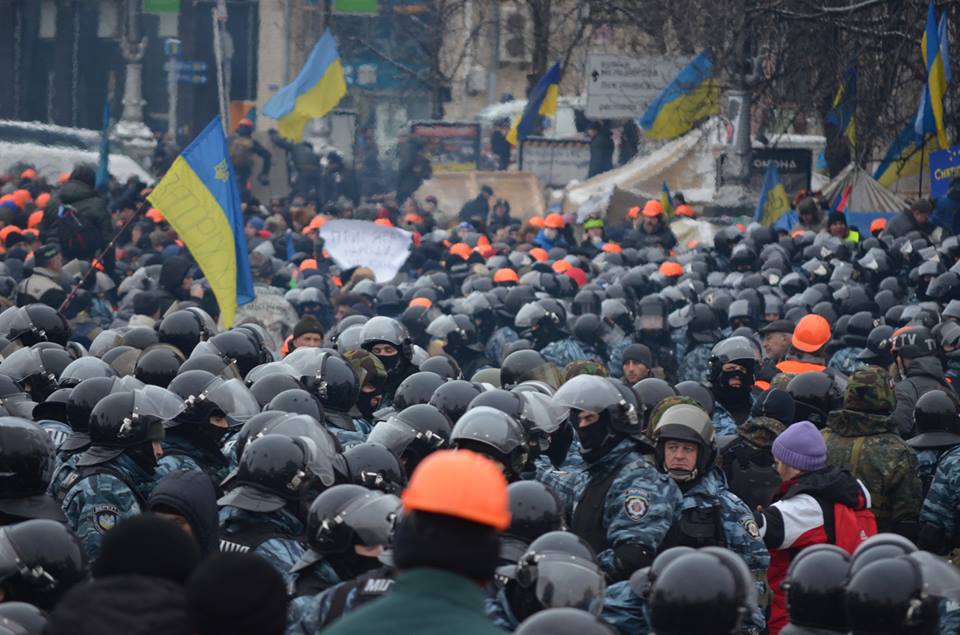
Do you believe the election of Yatseniuk is what the square wanted?
Yatseniuk promised that he was willing to take a bullet in the head for freedom, but apparently, he carefully avoided getting hit. People consider him a secondary personality, Tyanebyk a dangerous anti-Semite, and Klichko a good person but inexperienced… A political class that is worse than in Italy (if possible), but that’s what’s here: the broad-based government also here.
Consider the love that Italians demonstrate to their political class and you have the perfect representation of what the Ukrainians think about them. And then, like us, I have never found anyone who spoke well of those of the opposition. They say that Klitschko is not that bad, because at least he honestly earned his money. All the others are unwanted at all, or because they are madcaps or because, Tymoshenko in the head, they put their hands in the cookie jar.
Almost all the people who had taken to the streets in 2004, felt betrayed and then didn’t come to the Maidan. Others, however, have taken their place, and now everyone has, perhaps, another chance to build a normal country for their children, Yatsenyuk was an obvious choice, being the country into bankruptcy, but there’s just no trust in anyone anymore, and they need new people.
This is why the Maidan didn’t demobilize: it remains there, to remind politicians that people should not die for their rights, but if that is really necessary they’re willing to do so.
How is the situation in Crimea perceived in Kyiv?
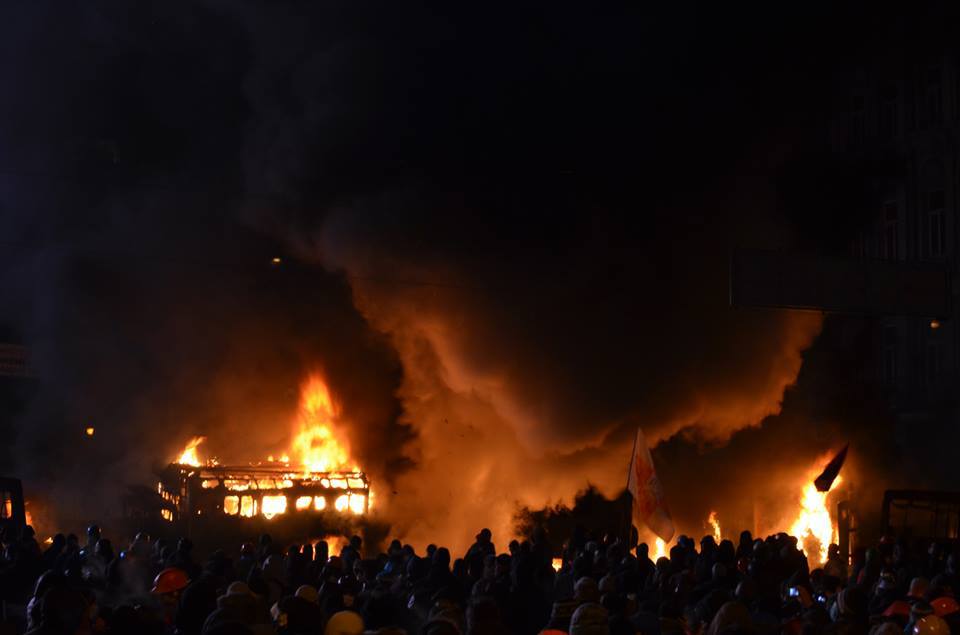
Emotionally, the reaction is very varied: those who are afraid, those who don’t, who say so nothing will happen, at least we hope. The churches of Ukraine have included Yanukovich and Putin in the list of demons to fight. Sure Tatars do not have to be very quiet, given the precedents. On the stage the other day saying that if one of their brothers is harmed, Putin will have its Afghanistan. But Crimea is not Afghanistan, it will be hard for the Tatars.
Many jokingly wonder why to invaded Crimea, as it is poor in the barrel and is completely dependent on Kyiv for water and tourism, which is two-thirds of Ukraine. A weightless.
But jokes aside it is not easy in general to understand what might happen now. An interesting analysis is reported this morning by Gianni Riotta on “La Stampa”. Gelb, former director of the Pentagon, has no mercy for anyone in his criticism but concludes that if everyone keeps doing, in simple words, the donkey, then there will really be something to be afraid of.


